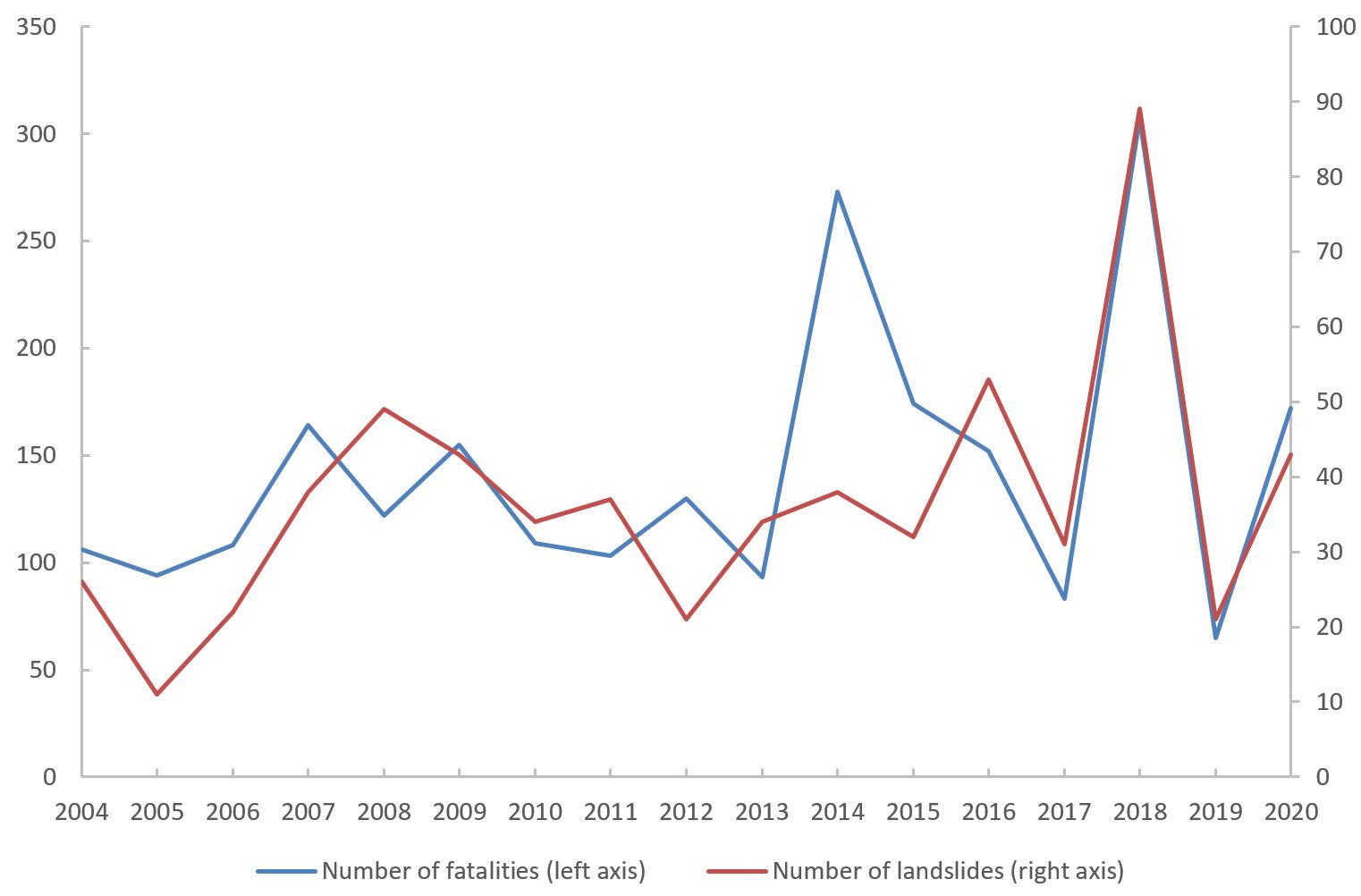24 July 2020
The deadly start to the monsoon season in Nepal
Posted by Dave Petley
The deadly start to the monsoon season in Nepal
Loyal readers will know that I have a particular interest in landslides in Nepal, having been undertaking research on that topic since 2000. Nepal is one of my favourite places in the world, with a beautiful landscape and wonderful people. It has two vices however, both of which are a huge impediment to a thriving economy. The first is a largely dysfunctional political system, which has reeled from crisis to crisis over the last 20 years (I strongly recommend Sam Cowan’s articles on this topic). The moral of the story is that it is bad news to be the junction between the world’s two most populous countries, and the malevolent influence that they both exert with casual ease.
The second is of course a terrifying range of natural hazards, including high seismic hazard, GLOFs, flooding and landslides. The latter are triggered by occasional earthquakes (and of course their aftermath) and the annual summer (southwest) monsoon. The monsoon develops through the months of July, August and September, bringing heavy and prolonged rainfall. But, the strength of the monsoon varies a great deal from year to year, meaning that the landslide outcomes are also highly variable.
The graph below shows the number of fatal landslides, and the resultant loss of life, that I have recorded in Nepal since 2004. It includes data up to 20 July 2020:-

The number of fatal landslides, and the number of resultant fatalities, in Nepal since 2004. Author’s own data.
.
The data shows the extraordinary variability in landslide impacts in Nepal from year to year – compare for example the number fatal landslides (the red line) in 2018 and 2019.
Back in 2015 I wrote about the seasonality of landslides in Nepal, and in particular the variability through the monsoon. July is the peak month, but large numbers of landslides occur in August and September too. The graph above shows that by 20 July, the number of fatal landslides in 2020 (43) had already exceeded the average annual total for the period 2004-2019 (36).
This suggests that Nepal is likely to have a particularly high total number of fatal landslides this year. The level of disruption is already high. It once again strengthens the argument for the need for a national agency to manage slopes across the country.
.
Quickslide 1: The cost of the peat slide in Ireland
Work continues in the aftermath of the large and amazing peat bog landslide in County Leitrim in Ireland. The estimated cost is over 5 million Euros.
.
Quickslide 2: Another landslide warning in Japan
Heavy rainfall is forecast in western Japan over the weekend. Landslide warnings are in place once again.


 Dave Petley is the Vice-Chancellor of the University of Hull in the United Kingdom. His blog provides commentary and analysis of landslide events occurring worldwide, including the landslides themselves, latest research, and conferences and meetings.
Dave Petley is the Vice-Chancellor of the University of Hull in the United Kingdom. His blog provides commentary and analysis of landslide events occurring worldwide, including the landslides themselves, latest research, and conferences and meetings.
Management of vulnerable SLOPES in mountainous topographical location be sustainably corrected for the MITIGATION of hazardous scenes (events)DUE to the incessant rains SOME time as
Down pour during the MONSOON season.